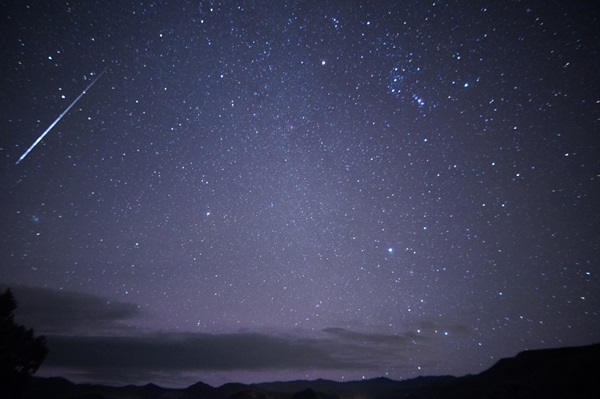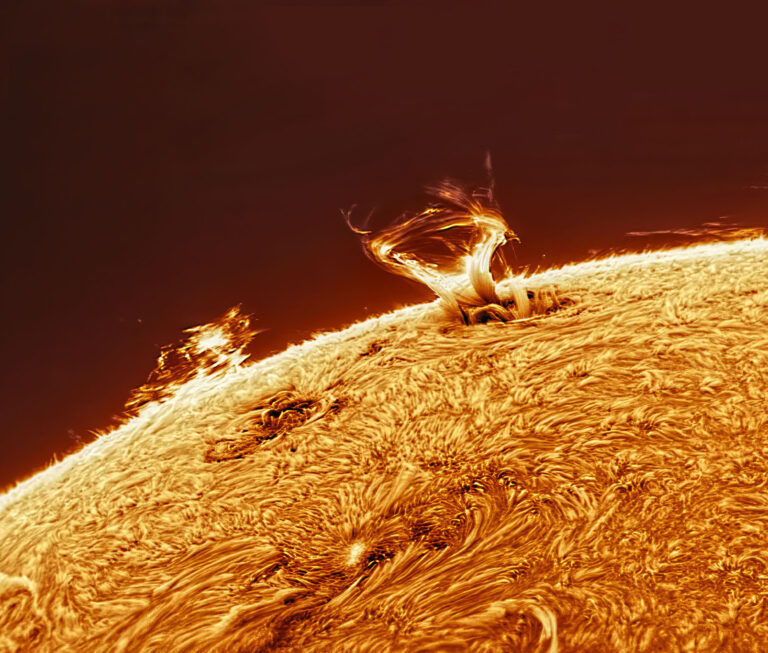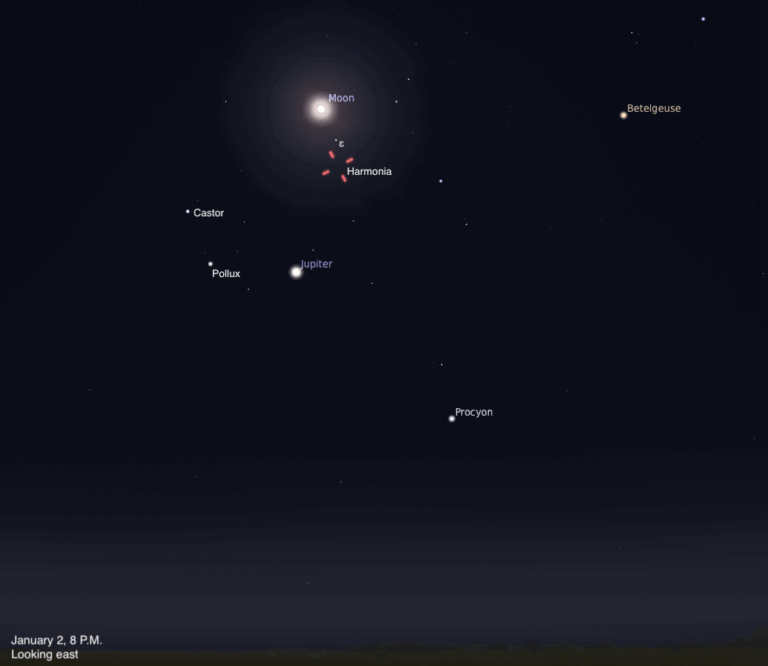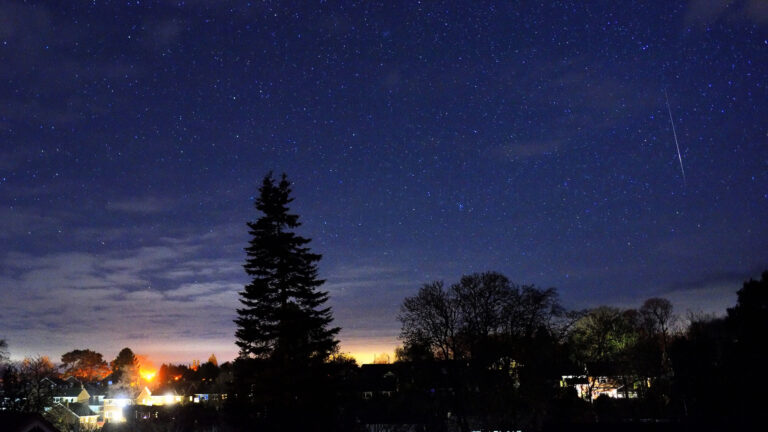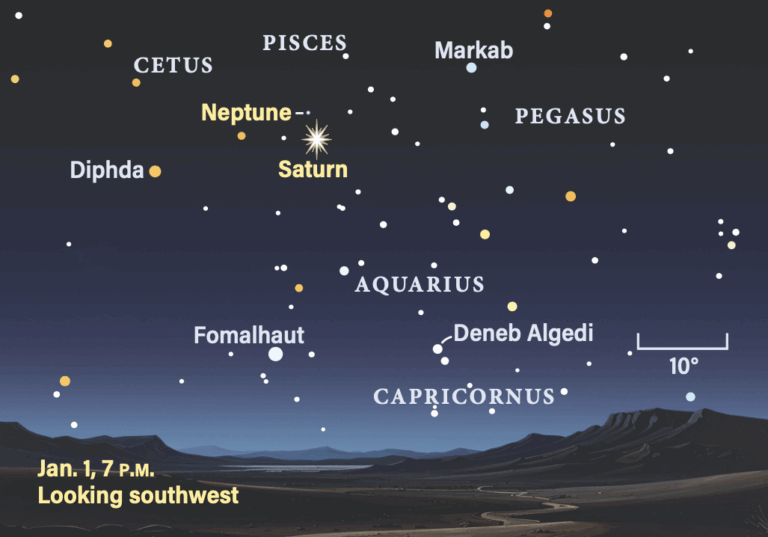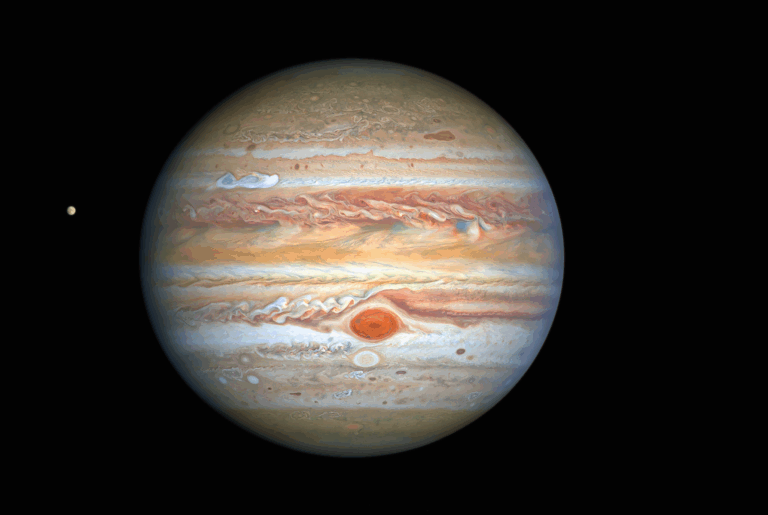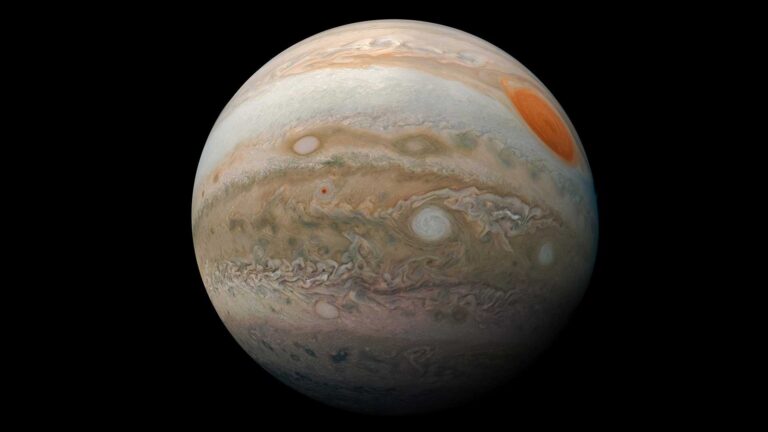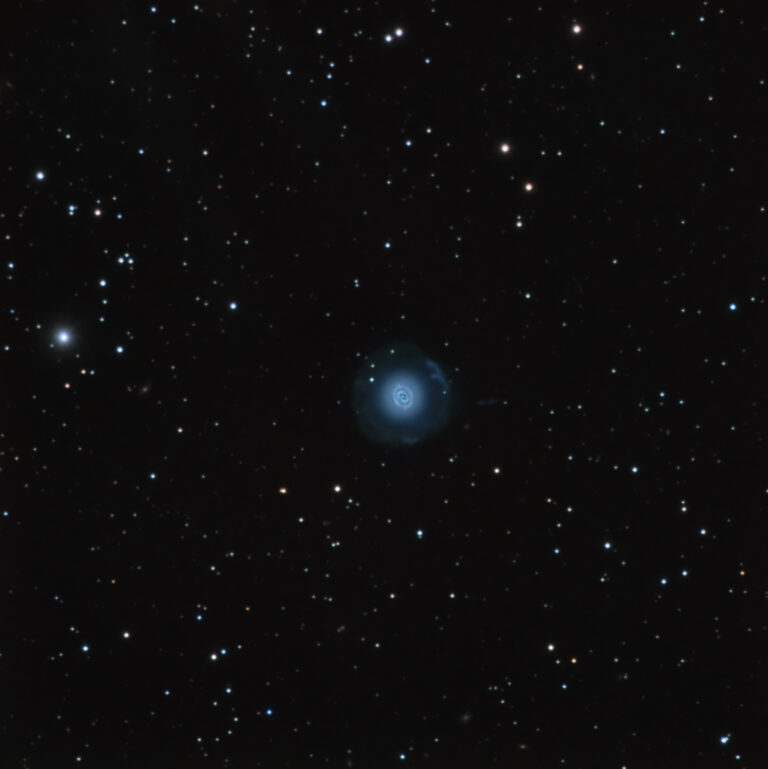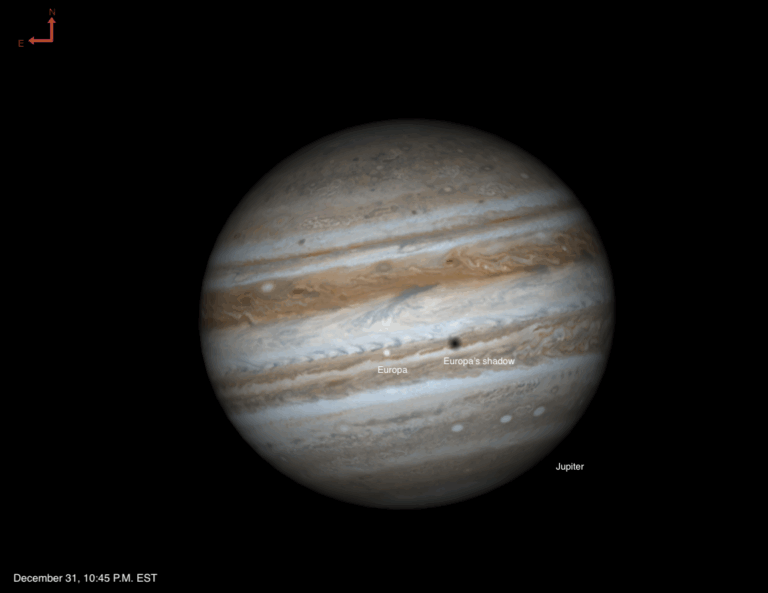Key Takeaways:
- The article outlines favorable observing conditions for several planets, including minor planet 7 Iris, Saturn (displaying its maximum ring tilt), and Uranus, which achieves opposition and peak visibility.
- Predawn celestial events feature Venus and Mars in conjunctions with the Moon and specific stars, alongside optimal viewing of the zodiacal light following a New Moon.
- Key stellar and asterism phenomena include the variable star Algol reaching minimum brightness and the seasonal prominence of the constellations Orion and the Great Square of Pegasus.
- The Orionid meteor shower is noted to peak under excellent viewing conditions, attributed to a moonless predawn sky.
The second-brightest asteroid of 2017 puts on a nice show in October’s sky. Minor planet 7 Iris currently glows at magnitude 7.3, which is bright enough to see through binoculars from the suburbs. It resides in the constellation Aries the Ram, a region that climbs high in the east by late evening. Tonight, Iris stands 2.3° east of Aries’ brightest star, magnitude 2.0 Hamal (Alpha [α] Arietis). The asteroid tracks slowly southwest during the remainder of the week.
Saturday, October 14
Saturn remains a tempting target in this week’s evening sky. The ringed planet stands nearly 20° above the southwestern horizon as darkness falls. Shining at magnitude 0.5, it appears significantly brighter than any of the background stars in its host constellation, Ophiuchus the Serpent-bearer. Of course, the best views of Saturn come through a telescope, which reveals a 16″-diameter globe surrounded by a spectacular ring system that spans 36″. But more significantly, the rings tilt 27.0° to our line of sight — the maximum angle possible — in mid-October. The rings haven’t appeared this open since 2003 and they won’t approach this tilt again until 2032. The steep angle offers superb views of ring structure.
Sunday, October 15
The variable star Algol in Perseus reaches minimum brightness at 1:25 a.m. EDT tomorrow morning. Observers on the East Coast who start watching around midevening can see the star’s brightness diminish by 70 percent over the course of about five hours. Those in western North America will see Algol brighten noticeably from late evening until dawn starts to light up the sky, when the star stands high in the west. This eclipsing binary system runs through a cycle from minimum (magnitude 3.4) to maximum (magnitude 2.1) and back every 2.87 days.
The star Algol is actually a triple system; two of its components form an eclipsing binary, recorded here with the CHARA interferometer.
Dr. Fabien Baron
Monday, October 16
The night sky’s most conspicuous harbinger of winter now rises in the east before midnight local daylight time. The constellation Orion the Hunter appears on its side as it rises, with ruddy Betelgeuse to the left of the three-star belt and blue-white Rigel to the belt’s right. As Orion climbs higher before dawn, the figure rotates so that Betelgeuse lies at the upper left and Rigel at the lower right of the constellation pattern.
Tuesday, October 17
The predawn sky sparkles with activity this morning as a waning crescent Moon joins brilliant Venus and ruddy Mars. The Moon appears 5 percent lit and lies just 2° to Mars’ left. Venus appears 6° below the other two. The best views come 45 minutes to an hour before sunrise, when the trio stands out against the morning twilight. Most binoculars will capture all three in a single field of view.
Wednesday, October 18
Venus appears 0.2° north of the 4th-magnitude star Eta (η) Virginis this morning. At magnitude –3.9, the planet shines more than a thousand times brighter than the star.
Mars passes 0.5° north of the 4th-magnitude star Beta (β) Virginis this morning. At magnitude 1.8, the Red Planet appears about five times brighter than the star.
Thursday, October 19
Uranus reaches opposition and peak visibility tonight. Opposition officially arrives at 2 p.m. EDT, when the outer planet lies opposite the Sun in our sky. This means it rises at sunset, climbs highest in the south around 1 a.m. local daylight time, and sets at sunrise. (From 40° north latitude, Uranus peaks at an altitude of 60°, the highest it has appeared at opposition since February 1963.) The magnitude 5.7 planet lies in southeastern Pisces, 1.8° west-northwest of magnitude 4.3 Omicron (ο) Piscium. Although Uranus shines brightly enough to glimpse with the naked eye under a dark sky, use binoculars to locate it initially. A telescope reveals the planet’s blue-green disk, which spans 3.7″.
New Moon occurs at 3:12 p.m. EDT. At its new phase, the Moon crosses the sky with the Sun and so remains hidden in our star’s glare.
With the Moon now gone from the predawn sky, the rest of this week offers an excellent opportunity to view the zodiacal light. From the Northern Hemisphere, early autumn is the best time of year to observe this elusive glow before sunrise. It appears slightly fainter than the Milky Way, so you’ll need a clear moonless sky and an observing site located far from the city. Look for the cone-shaped glow, which points nearly straight up from the eastern horizon, shortly before morning twilight begins (around 5:45 a.m. local daylight time at mid-northern latitudes). The Moon remains out of the morning sky until November 3, when its bright light will return and overwhelm the much fainter zodiacal light.
Saturday, October 21
If you’re out enjoying the predawn darkness, you’ll likely see a number of bright streaks peppering the sky. These are Orionid meteors, which belong to an annual shower that peaks before dawn. Observers under a dark sky could see up to 20 meteors per hour shortly before twilight begins, when the constellation Orion the Hunter climbs highest in the south. (The meteors appear to radiate from a point in northern Orion.) With the Moon absent from the morning sky, viewing conditions could hardly be better this year.
Sunday, October 22
Look high in the east after darkness falls this week, and you should see autumn’s most conspicuous star group. The Great Square of Pegasus stands out in the evening sky at this time of year, though it appears balanced on one corner and looks more diamond-shaped. These four almost equally bright stars form the body of Pegasus the Winged Horse. The fainter stars that form the rest of this constellation’s shape trail off to the square’s west.
Venus appears 1.3° southwest of the 3rd-magnitude star Gamma (γ) Virginis this morning.

